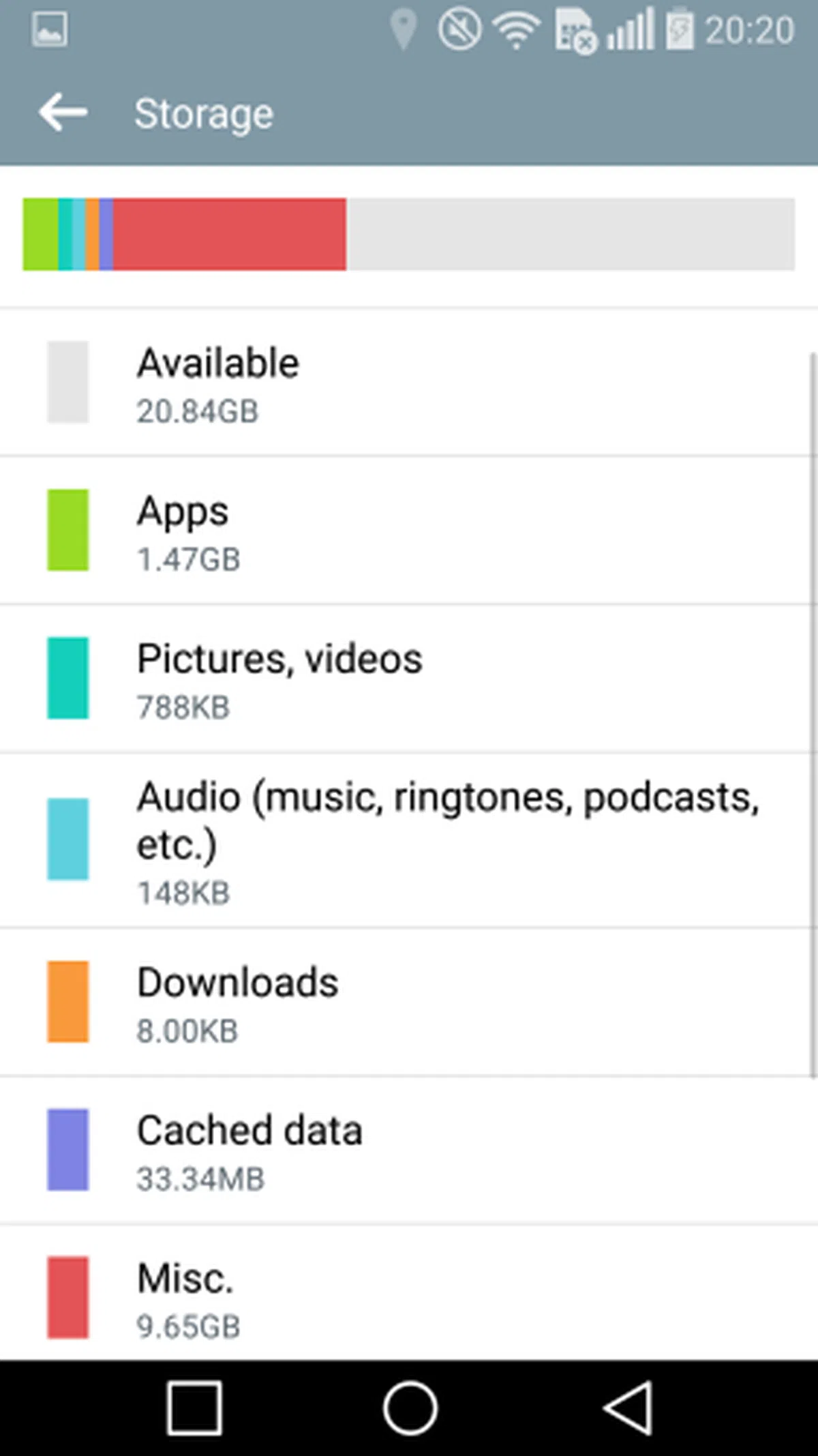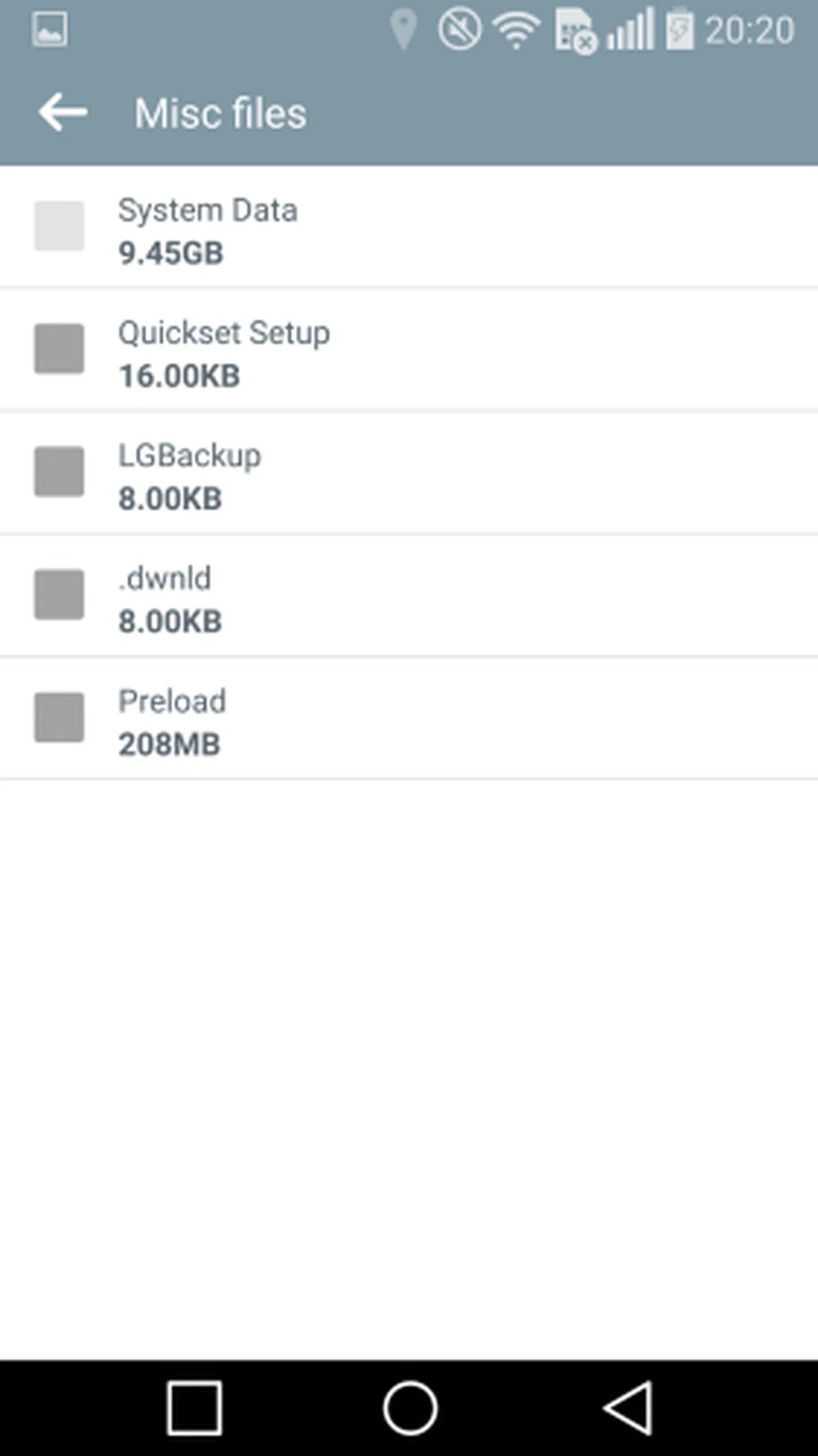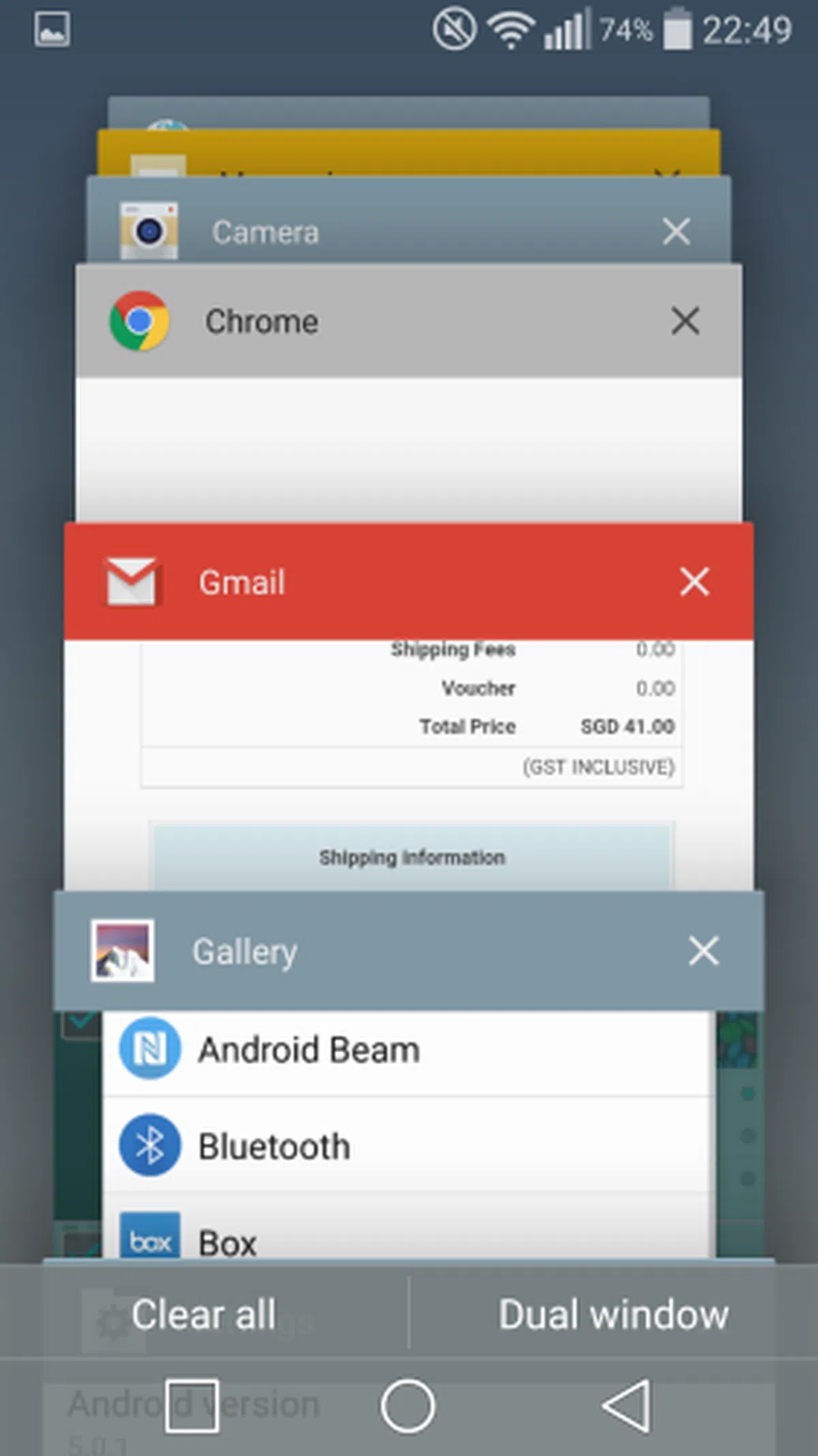LG G Flex2 - Flexes ahead of the pack
The LG G Flex2 is the first Qualcomm Snapdragon 810-powered device to land in Singapore. Sporting a more manageable 5.5-inch curved display and ergonomic design, is the G Flex2 the Android smartphone to get this quarter? We find out in this review.
By HardwareZone Team -

Improving a curved phone, bit by bit
Like it or not, curved displays are here to stay. The past two years saw LG and Samsung competing between themselves with curved mobile devices such as the Galaxy Round, the G Flex, the Gear Fit, the Galaxy Note Edge 4G+, and the Gear S.
While Samsung is expected to launch a curved variant of its upcoming Galaxy S6 on March 1 at Mobile World Congress (MWC) in Barcelona, LG took the opportunity at the earlier International Consumer Electronics Show (CES) in Las Vegas to shed the limelight on its second generation curved smartphone, the G Flex2. With a more refined design, faster processor, better camera, and higher resolution display, can the G Flex2 win the hearts and wallets of consumers? Before we continue, here's a quick overview of its specs:

Design & Handling
(Note: We've done a hands-on article with the G Flex2 at CES 2015, so we'll only summarize the key points and additional observations here.)

Like its predecessor, the G Flex2 will be an instant conversation starter with its curvy design. While it looks similar to the G Flex, LG did made some refinements. LG claims that the back has a steeper 650mm radius curvature for more comfortable grip. We can attest to that as it rested comfortably and securely in our hands during the course of us using it.
Perhaps the smaller form factor also helps to deliver a better handling experience compared to the bigger G Flex. For comparison's sake, the G Flex2 is shorter (149.1 vs 160.5mm), narrower (75.3 vs 81.6mm) and lighter (152 vs 177g) than the G Flex. It almost matches the 5.5-inch G3 in terms of dimensions too, and is actually more compact than the Apple iPhone 6 Plus.

The LG G Flex 2 measures 7.1mm and 9.4mm at its thinnest and thickest point respectively along the curved design.
Besides a better handling experience, the curved design also brings the microphone closer to the mouth, which theoretically results in better sound pickup compared to conventional phone designs. However, during our past few days of testing, we found no noticeable difference in clarity or volume between the G Flex2 and an Apple iPhone 6 Plus.
When you check out the back of the G Flex2, there are several minor changes that you may have noticed. Off the bat, you will recognize the same laser autofocus lens, dual-LED flash, and rear key setup at the upper portion of the device. The rear key setup is slightly different from the G Flex and even the G3, although it seems that LG borrowed some design inspiration from the latter. Existing owners of LG's recent smartphones will have no issues adapting to the rear keys which are easily accessible and offer good tactile feedback when pressed.

The rear cover of the G Flex 2 is also more durable; it is protected by DuraGuard Glass which is a special chemical treatment technology developed by LG.
Another change to the rear cover is the faster healing time of the "Wolverine-like" coating. First introduced on the G Flex, LG has improved the healing time on the G Flex2. The company said that light scratches and nicks should take just 10 seconds (down from three minutes) to disappear at room temperature.
We put the back cover to the test by using a house key to scratch it and unfortunately, the scratch still remained after more than an hour. The rear cover also picks up some minor scratches over the past few days of usage although they were only visible under certain angles. We think the coating is only effective against very light hairline scratches and not deep scratches caused by sharp objects like pen knives or keys. To be fair, LG didn't say it's indestructible and it's after all made of plastic. On the other hand, LG strengthened the glass on the display with its own chemical treatment that makes the screen 20% stronger and 30% more durable against damages.
LG has also made the rear cover removable, but the 3,000mAh battery is not. Removing the cover requires little effort though, and you need to do that only when you need to swap out the microSD card and/or micro-SIM card. Having said that, the G Flex2 is probably the first smartphone to support memory cards of capacities up to 2TB. On a sidenote, the model which is going to be available in Singapore will come with 32GB internal storage space.

The microSD and micro-SIM card slots are located on the top right corner of the LG G Flex 2.
If you take a closer look at the rear cover, you will notice the concentric circle finish that is somewhat similar to the ASUS ZenFones. LG brands it as the Spin Hairline Pattern, which is nothing more than just for aesthetics purposes.
Display

With a bump in resolution and a more manageable screen size, the LG G Flex 2 can be the ultimate mobile entertainment device.
LG decided to shrink the display on the G Flex2 to a more manageable 5.5-inches and bumps up the resolution to 1080p. This is apparently made possible after the initial technical limitations of the Plastic-OLED technology. If you are planning to consume multimedia content (especially videos) on the G Flex2, you won't be disappointed by the display. It exhibits deep blacks, vibrant colors, and good contrast. The bezels are also quite slim, hence allowing LG to fit a 5.5-inch display in a smaller chassis.

You can select one of the three screen modes on the LG G Flex 2. This can be accessed via Settings > Display > Screen Mode.
However, the G Flex2's screen appears to suffer from the same problem as the G Flex - graininess. At maximum brightness, the graininess of the display is not apparent although you still can see it if you inspect it closely. When you turn down the brightness level to its minimum, the graininess becomes a lot more apparent. We spotted graininess appearing on the Settings page, the Notification panel, and when logging into the Facebook app. The graininess seems to appear on certain colors only and it did not seem to appear when browsing web pages with a white background. As before, we attributed the graininess to the plastic nature of the display which could be a technical limitation.

Increasing brightness is one way to workaround the graininess.

Notice how the blue background and light blue login page look more grainy on the LG G Flex 2 (left) compared to a Full-HD display of another Android smartphone.
User interface
The G Flex2 ships with Android 5.0.1 Lollipop and its customized UX interface. The UX interface debut on the G3 last year, which we praised to be sleek and modernized. You can expect to see the same software features here, such as the Smart Keyboard and Smart Notice. You can find out more about the UX's features here.
 |  |  |
There are three new features introduced on the G Flex2, namely Gesture Shot, Gesture View and Glance View. The first two features - Gesture Shot and Gesture View - are imaging features that allow you to capture a selfie with a hand gesture as far as 1.5m away and the ability to check the last shot immediately after taking a photo or selfie respectively.
The concept of Glance View is similar to Samsung's Quick Glance, which was introduced on the Galaxy Note II. Unlike Quick Glance, which requires the hovering of your hand over the proximity sensor on the front panel of the Galaxy Note II, Glance View on the G Flex2 displays notifications such as time, recent messages, or missed calls with a downward swipe of the display even while the screen is turned off.

Glance View lets you view the time, date, status bar and notifications when you swipe down from the display of the LG G Flex 2.
Performance benchmarks
The G Flex2 is powered by a Qualcomm Snapdragon 810 64-bit octa-core (quad-core 1.5GHz Cortex A53 and quad-core 2.0GHz Cortex A57) processor with 2GB of RAM. As it is the first Snapdragon 810-powered device to arrive in our market, we are certainly interested to see how the chipset fared, especially with certain reported concerns surrounding it.
For example, reports surfaced in December 2014 that Qualcomm was facing "hard-to-solve" issues on the 810 chipset. The rumors apparently forced Samsung to ditch the Snapdragon 810 and use its own Exynos processors on the upcoming Galaxy S6. It was later confirmed by Qualcomm that "a large customer's flagship device" would not use the Snapdragon 810 processor. LG initially said that there were no overheating issues with the processor, but reportedly admitted that there were some issues in the "initial batch". The issues were said to have been resolved.
For this review, we compared the G Flex2 against other flagship smartphones such as the Apple iPhone 6 Plus, OnePlus One, Samsung Galaxy Note 4 4G+, and Xiaomi Mi Note. We also added the original G Flex to see the differences in performance.
Quadrant
Quadrant evaluates a device's CPU, memory, I/O, and 3D graphics performance. This is an obvious win for the G Flex2; it has the highest Quadrant score to date of 27,364, which is expected since it runs on the most powerful Snapdragon processor available in the market. Performance gain is about 10% compared to the Snapdragon 805 in the Galaxy Note 4 4G+.

3DMark (2013)
Originally developed as a PC gaming benchmarking tool, 3DMark now supports multiple platforms including Android. The Ice Storm benchmark is designed for smartphones, mobile devices and ARM architecture computers.
For an in-depth understanding of 3DMark for Android, do head over to our article, "3DMark - Android Device GPU Performance Review." In a nutshell, it is an OpenGL ES 2.0 benchmark test that uses fixed off-screen rendering to run two graphics tests designed to stress the GPU performance of your device and a physics test to stress its CPU performance. The benchmark consists of three test portfolios: Standard (720p resolution rendering), Extreme (1080p resolution rendering with higher quality textures and post-processing effects), and Unlimited (disabled v-sync, display scaling and other OS factors that make it ideal for chipset comparison).
Since all the recent flagship smartphones max out the scores for the Standard and Extreme tests, we will only be looking at the scores for Ice Storm Unlimited. The G Flex2 also scores a massive win over its rivals in this benchmark with 14% performance boost over the Snapdragon 805-powered Galaxy Note 4 4G+.

SunSpider JavaScript
SunSpider JavaScript helps measure the browsing performance of a device when processing Javascript. It not only takes into consideration the underlying hardware performance, but also assesses how optimized a particular platform is at delivering a high-speed web browsing experience. Surprisingly, the G Flex did not perform as well as we've expected. While it is ahead of the OnePlus One and Samsung Galaxy Note 4 4G+, it lags slightly behind the Xiaomi Mi Note. It is likely that LG requires a little more work on software optimization, or that is due to the newer Android 5.0 (Lollipop) operating system.

Despite being slightly slower than the Mi Note in Sunspider, the overall user experience on the G Flex2 is snappy and smooth.
Battery performance
Our standard battery test for mobile phones includes the following parameters:
- Looping a 800 x 480-pixel video with screen brightness and volume at 100%
- Wi-Fi and Bluetooth connectivity turned on
- Constant data streaming through email and Twitter


A higher resolution display coupled with a smaller battery resulted in the G Flex2 lasting an hour (10%) shorter than its predecessor at slightly below 10 hours (to be exact, it's 9 hours and 47 minutes). It holds its own against the iPhone 6 Plus and OnePlus One while the Galaxy Note 4 4G+ still maintains the lead with its more power-efficient Super AMOLED display as seen in the Power Consumption chart. The G Flex2 also falls short of the standard set by the Mi Note, which lasted about 7% longer despite having a 5.7-inch full HD display and the same battery capacity. Overall, power efficiency on the G Flex2 is considered quite good as it is lower than most of its phones in its category.
Portability
We measured the portability of a device by calculating its battery life to (weight x volume) ratio. As the lightest and one of the more compact 5.5-inch phones in this comparison, the G Flex2 naturally edges out most of the competition except Samsung and Xiaomi, which were higher due to better battery mileage.

On a sidenote, the G Flex2 also comes with Fast Charge, a feature that is fast becoming a standard among Android flagship smartphones such as the Mi Note, Galaxy Note 4 4G+ and Oppo's smartphones. LG claims that the G Flex2 can be charged from 0% to 50% in under 40 minutes.
Feeling curious, we put its claims to the test by draining the phone to 0% and juicing it up via the bundled charger. The battery took the same time (40 minutes) to hit 40%, which is actually quite respectable. To put this into context, the Galaxy Note 4 4G+ took 30 minutes to hit close to 40% for its battery. The champ is still the Oppo Find 7 with a record of 82% in 37 minutes.
Camera performance
The G Flex2 seems to use the same imaging hardware as the G3, which includes a 13-megapixel rear camera sensor with optical image stabilization plus (OIS+) and laser autofocus. OIS+ and laser autofoucs were introduced on the G Pro 2 and G3 respectively. Here's a quick recap of each feature:
- OIS+: the addition of digital imaging stabilization such as modified automatic exposure, noise reduction, frame per second functions and frame selection algorithm to compensate shaky hands.
- Laser autofocus: it is the same technology used in radar guns used by traffic police to track vehicles' speeds, which in the context of a phone, helps capture a moment faster and clearer.

On a bright, sunny day, the LG G Flex 2 is capable of taking good photos with good amount of details and accurate color reproduction.

When it comes to indoor lighting, image artifacts are a tad more apparent and photos are less sharp.
Conclusion
There are several aspects of the G Flex2 that we like over its predecessor, such as the higher resolution display, a more compact form factor, the addition of a memory card slot that supports up to 2TB, smooth navigation, good imaging performance, and very decent battery life. For a gen 2 product, this is quite a long list of improvements, and LG should be commended for that.
That said, the curved form factor is still very much dependent on users' preference as it offers nothing more than a natural handling experience at this point. Of course, with a one-of-a-kind curved smartphone that flexes at the same time, it'll definitely raise your hipster quotient by a few notches. Still, if performance is what you want, you won't go wrong with a phone that sports the latest and fastest Qualcomm processor that even supports future LTE Cat 9 speeds at up to 450Mbps. All these are enough to futureproof your investment for a long while.
With pre-orders starting on February 27 at all three telcos, you have plenty of time to consider whether this curved smartphone running the latest Lollipop operating system on the most powerful Snapdragon processor is your cup of tea and worth spending S$998 of your angbao money on.
Our articles may contain affiliate links. If you buy through these links, we may earn a small commission.